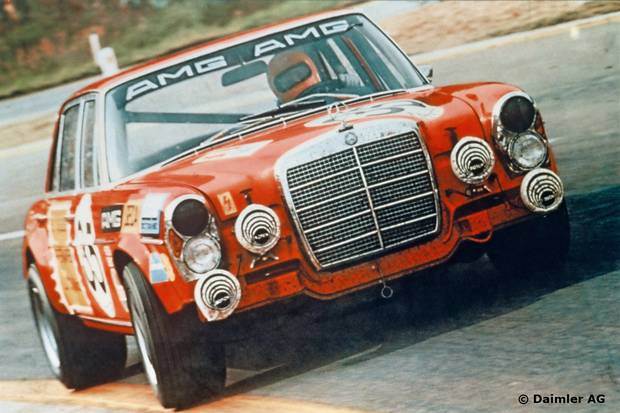Our story begins with a forge and a pig. The forge belongs to Hans Werner Aufrecht, engineer and racing obsessive. The pig is one heavy porker, a crimson 1970 Mercedes-Benz 300SEL nicknamed die Rote Sau. Under its enormous hood, it carries a massive 6.8-litre V-8, cranking out 420 horsepower. It is the first AMG, bellowing so loud that you can still hear the echoes, some 50 years later.
This June, AMG celebrates a half-century of being the automotive equivalent of medieval siege weaponry. Technology has advanced – the C63's 4.0-litre V-8 heart features direct-injection, twin-turbocharging, and a host of emissions controls – yet the recipe remains the same. Every proper AMG comes with a surfeit of horsepower and the attitude of a sledgehammer.
The company takes its name from Aufrecht, Melcher and Grossaspach, the last being Aufrecht's hometown. Melcher is Erhard Melcher, a young technical genius who became one of AMG's two founding partners.
As you'd expect of two bright and driven people, and especially of two engineers, Aufrecht and Melcher weren't friends at first. Both worked for Daimler-Benz in the 1960s, developing racing engines, and had a brief initial argument where they passive-aggressively left each other snippy notes in the test bench data logs.
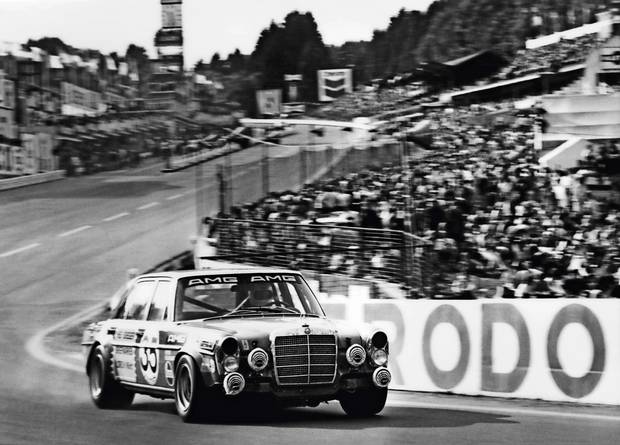
Hans Werner Aufrecht and Erhard Melcher both developed racing engines for Daimler-Benz in the 1960s.
Mercedes-Benz
However, the combination of Aufrecht's racing dreams and Melcher's expertise soon overcame any rivalry. The former grew up watching Mercedes-Benz's Silver Arrows take racing victories with Sir Stirling Moss and Juan Manuel Fangio at the wheel. Working for Mercedes in its racing department was a dream job. However, in 1965, Daimler-Benz decided racing was a waste of time, and shut the department down.
Aufrecht wasn't about to take that lying down. He bought a Mercedes-Benz 300SE with a partner from the Mercedes racing division, hid it away in an old mill, and began prepping it for touring car racing. Suitably lightened, he then began looking for what would become a consistent AMG theme: more power.
Melcher wasn't just a factory engineer; in his spare time, he also tuned racing motorcycle engines for his older brother. Presented with the challenge by Aufrecht, he took the standard straight-six engine from 170 horsepower to 238, thanks to the installation of the fuel-injection system out of a 300SL Gullwing.
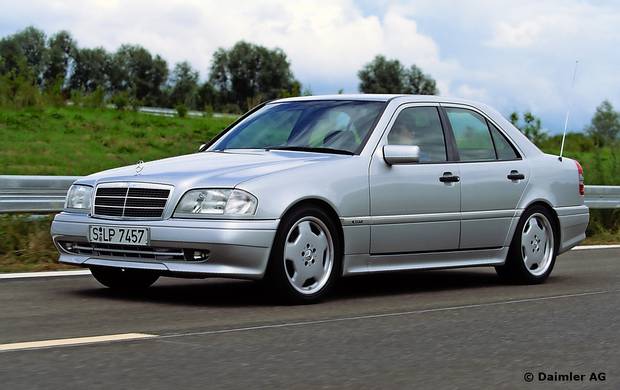
The C36 AMG arrived in Mercedes dealerships in 1995.
Daimler AG
The real gamble came when Aufrecht and Melcher revealed their creation to Daimler higher-ups. The board's decision was succinct. The car would be allowed to race, but if it didn't succeed, both engineers would be fired. Fortunately, the car performed admirably, winning 10 races.
Suddenly, Aufrecht and Melcher had a reputation, and the orders came pouring in. Privateer racing teams wanted their expertise, and customers wanted their road cars hopped up with more power. Most of the former Daimler-Benz racing division had its street cars tuned at the old mill, and soon the pair were determined to strike out on their own. AMG Motorenbau und Entwicklungsgesellschaft mbH (engine production and development) was born in 1967.
After die Rote Sau wiped the floor with the competition at the 24 hours of Spa in 1971, AMG saw even greater demand for racing engines, and relocated to its current home in Affalterbach. In this iteration, AMG was entirely separate from Mercedes, and some of the cars it created are still legendary.
Take the Hammer. First, it's a car called the Hammer, which tells you quite a bit. AMG took the mid-sized W124 chassis E-class and managed to shoehorn in a hand-built 5.6-litre V-8. If you ordered one of these in 1986 and ran into a Lamborghini Countach on the Autobahn, you could be assured of your ability to put the rampant bull in your rearview mirror.
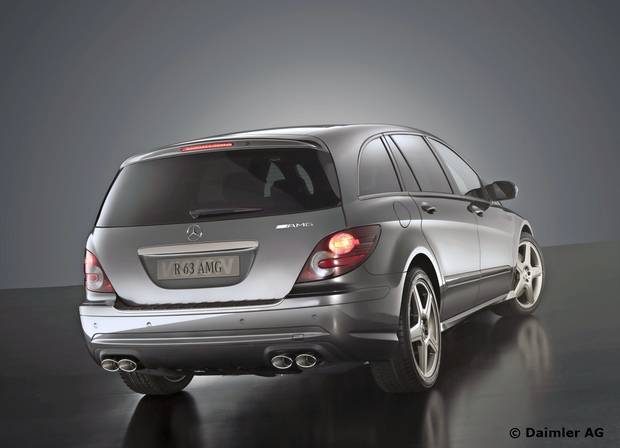
The R63 AMG of the mid-2000s is a 507-horsepower V-8-powered minivan.
Daimler AG
Further madness followed, with the likes of the SL73, a classic grand tourer with a ludicrous 7.3-litre V-12 engine stuffed under its hood. Launched in 1999, a variant of this engine is still used to create the heart of the Pagani supercar range.
More importantly, Mercedes and AMG began the slow courtship that would end with the mothership taking over the brand entirely. In 1995, the C36 AMG arrived in Mercedes dealerships, allowing fans greater access to AMG. In 1999, when the homologation-special CLK-GTR was blowing the minds of the few who could afford one, Mercedes acquired 51 per cent of AMG's shares, and moved AMG under the corporate umbrella. The transfer was completed in 2005, with Aufrecht selling his remaining shares to Mercedes-Benz.
As a result, Mercedes-Benz began applying the AMG formula to pretty much everything it made. There's no better example of this than the R63 AMG of the mid-2000s, which is a 507-horsepower V-8-powered minivan. That's silly. And wonderful.
The only issue with making V-8-powered versions of every kind of Mercedes-Benz is that it becomes hard to differentiate the truly special cars. Thus, Mercedes designated a Black Series line of ultra-powerful coupes, and eventually had AMG build the gull-winged SLS from scratch.
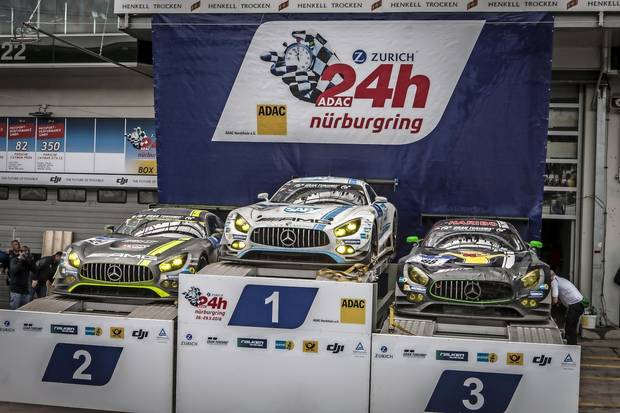
Mercedes moved AMG under the corporate umbrella after acquiring 51 per cent of its shares in 1999.
Mercedes-Benz
Today, Mercedes-Benz leverages the AMG brand by badging cars as Mercedes-AMG. Most of the engines are still hand built and signed by a single technician in Affalterbach, but if you opt for the lower numbers, such as in the Mercedes-AMG C43, you get a more mass-market twin-turbo V-6.
That's not likely to please AMG's hard-core fans, but they needn't be too worried. Just listen to the sound of something like the C63S coupe starting up: drama, speed, the heat of the forge, and the thunder of a V-8. Fifty years on, AMG still knows how to swing a hammer.
